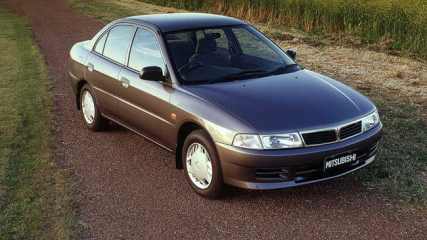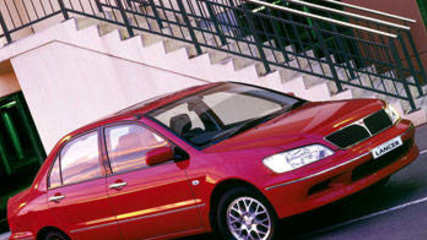Mitsubishi Lancer Evo 2004 Review
By CarsGuide team · 23 Oct 2004
From the dropping nose and gaping mouth to the wild tail wing, the sports-bred Lancer demands attention. It is one of the most outrageous cars on the road and rivals anything from Holden Special Vehicles or Ford Performance Vehicles.And it's not just a show pony. It is Porsche quick and its turbocharged all-wheel-drive power pack translates into acceleration that makes you feel you've been clubbed on the back of the head.The Evo also demands attention from Subaru WRX fans who recognise the Mitsubishi as the only serious rival to their car's leadership of the turbocharged AWD sports class that dominates the rally world and games such as Gran Turismo.The Evo has just made its second official swoop on Australia, complete with a long list of technical upgrades and a price that's come down to $61,990.That's a big drop from the first Evo raid, though there's always the question of insurance.There will be only 100 cars for Australia, but incorporating it into the Mitsubishi mainstream, rather than its Ralliart competition division, means the Evo is much closer to the WRX and WRX STi in price and back-up.The Lancer Evolution model has been around since the early 1990s. Mitsubishi is up to Evolution VIII and IX is on the way.The package is built up from a Lancer four-door sedan, which starts at $19,990, with enough go-fast bits and luxury to add $40,000 on the bottom line.The heart of the car is its 16-valve 2.0-litre engine, which picks up a turbocharger and intercooler to liberate a full 195kW of power and 355Nm of torque.Those are V8-style numbers and Mitsubishi says the Evo VIII has been tweaked again in the engine room, meaning premium unleaded is essential.The gearbox has only five ratios but they have been pushed together to improve performance.The all-paw drive system has also been improved to keep it pointing straight down the road, even in racetrack use.There are also huge Italian Brembo disc brakes with sports anti-skid control, 17-inch alloy wheels, wide Bridgestone tyres, sports-tuned suspension, and body bits that include a carbon-fibre rear wing.Inside, the Lancer has Recaro bucket seats with optional leather, a Momo sports wheel and titanium-look panels.ON THE ROADYOU have to be switched on to get the best from the Evo. It's an extreme machine that's definitely not suitable for inexperienced youngsters.The Evo hooks up hard and fast, with a 0-100km/h sprint time in the five-second range and cornering grip that moves it into the Porsche class. It also has brilliant brakes.But the car still feels like it's a bunch of bits that have been added to a cheapie Lancer. You see it in the ghastly carpet in the boot and in the lacklustre gauges, feel it in the lightweight boot panel, and hear it when you slam a door.Most Evo buyers won't worry, but Subaru has done a lot of work to move the WRX – and particularly the STi – away from its basic Impreza. And the latest Impreza is a better car than the basic Lancer.Still, the new Evo is a lot better than the Tommi Makinen edition.The new model is a lot quieter and considerably more refined, and that means everything from the ride over broken surfaces to the headlamp performance. The car feels more substantial, and more like a $60,000 sporty.But the price puts it up against the impressive Mazda RX-8 and Nissan's 350Z, and we'd take the Mazda every time over the Evo. It's a personal choice, for sure, but the Lancer doesn't have the quality or the refinement of the genuine sports car rivals.But there is no denying its appeal, or its pace. The Lancer Evo has V8-style torque from idle and, once the turbo gets spinning about 3000 revs, it goes into hyper drive. It's great fun, totally addictive and surprisingly safe.The all-wheel-drive system keeps the car hooked up in tight corners and it has a very nice cornering balance, usually just following the driver's line through any turn. It feels magnetised to the road, even on damp surfaces.Mitsubishi claims all sorts of electronic trickery, including switchable settings for the car's centre differential, but we couldn't feel anything. Which probably proves that it works.The Evo is definitely quicker than a WRX and more raw and responsive than an STi.The steering is sharp and direct, and the gearbox is a delight.It is possible to drive the Lancer Evo slowly, but that's not what the car is about. The firm ride, jiggly suspension and tyre roar spoil any quiet motoring.We liked the Lancer for a few days, but then got bored. It was just too much of everything, though any turbo-fuelled overtaking move made us smile.THE BOTTOM LINETHE latest Lancer Evo is even quicker, but more refined and better priced, to finally give the Subaru WRX a serious rival.








